Quick Pickled Eggs and Red Cabbage
Delicious pickled eggs with pretty red cabbage that gives them a gorgeous lilac hue. Spices such as cumin, ginger and mustard seeds make things even more interesting. An ideal snack for any time of day; even better if it accompanies a glass of beer.
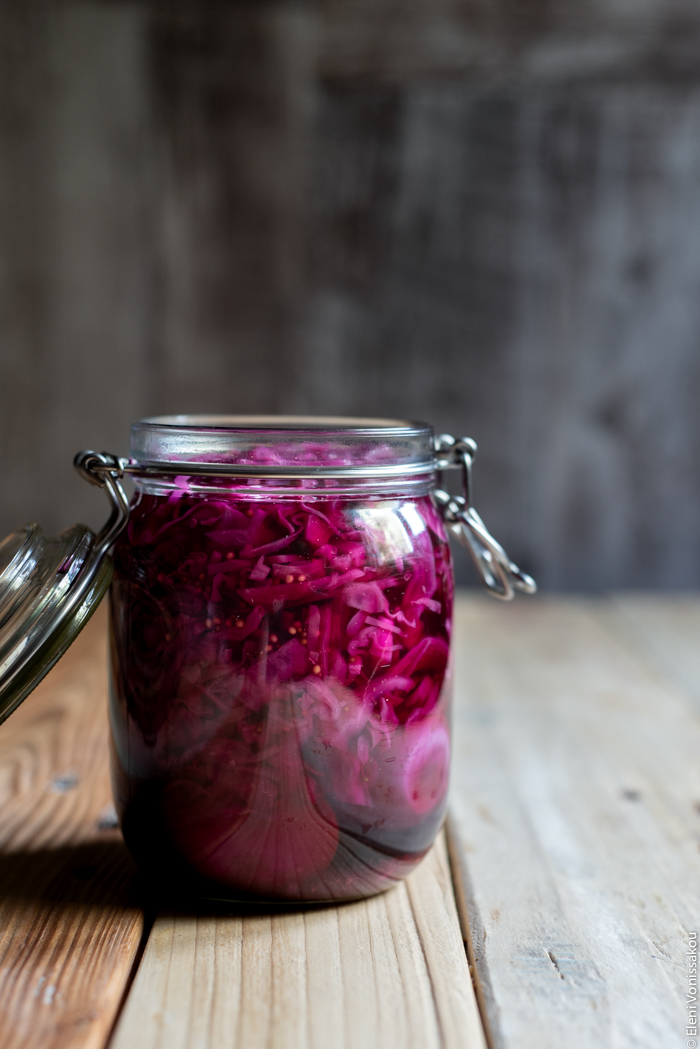
I made these for a magazine feature recently. The concept was “using up leftovers” from Easter lunch. I love coming up with great ways to use up food that isn’t eaten. And I really hate throwing food away. So this sort of recipe is one of my favourite.
The idea for the feature came after I did a little talk at an event on food waste. The research I did to prepare for this talk left me very unpleasantly surprised and disheartened. Did you know that one third – one third! – of all food produced ends up in the rubbish? The waste might happen in the first stages of production, for example in fields or manufacturing plants, or it might happen further down the processing line, or, finally, on the consumer end. That’s us. In fact, in developed countries the majority of this waste indeed happens on a consumer level. That’s the food you and I buy and never eat. How unbelievably sad.
It’s worse when you think about the big picture. A loaf of bread isn’t just a loaf of bread. It’s the sum of all the resources and energy and labour that went into making it. Do you know what a water footprint is? (I didn’t) It’s the quantity of water that is consumed in order to create something. The water footprint of bread can be up to 1,600 litres of water per kilo! This is a global average and depends on the country, but wow. Do you want to know about meat? In order to produce one kilo of beef, 15,000 litres of water are consumed. Off the charts. Beef has the largest water footprint of all meats. So we all need to think twice before throwing food into the rubbish bin.
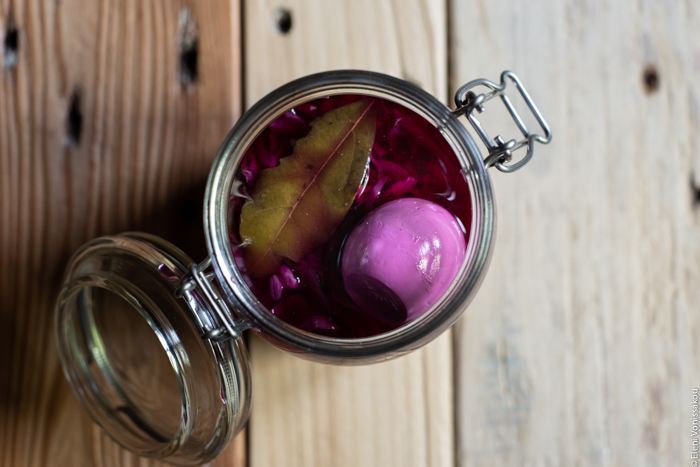
For the magazine feature I created three recipes, this is the first, using boiled eggs. There is not a single Greek household that doesn’t have its fair share of boiled eggs on Easter Sunday. And how many can you eat before you kind of want to spruce up the flavour a bit? This is the best way to make them a little different and maybe a tad more interesting. They also last longer too. Not to mention what a delicious snack they are, especially with a drink of beer!
I’ve made something similar before, with beetroot (see here). This version creates a slightly lighter purple colour, more like lilac actually. So pretty! As time goes by the colour further permeates the whites, until after a few weeks it turns them completely purple all the way to the yolk.
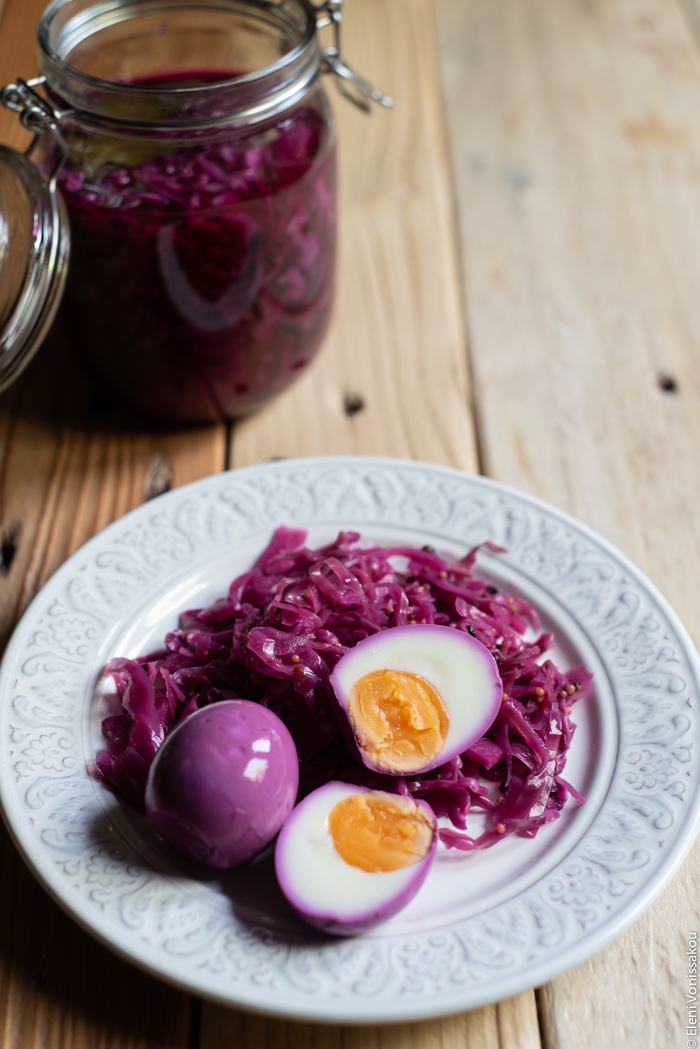
Now you might think the cabbage is used just for its colour, but actually that too is really tasty. It’s great in sandwiches and would make a fantastic topping for a hotdog or burger.
Are you wondering what the other two recipes are? I’ll keep them as a surprise. They’ll follow over the next few days, as Easter isn’t until the 28th here. Stay tuned!
Oh by the way, the water footprint for eggs is 200 litres for just one large one! So get pickling.
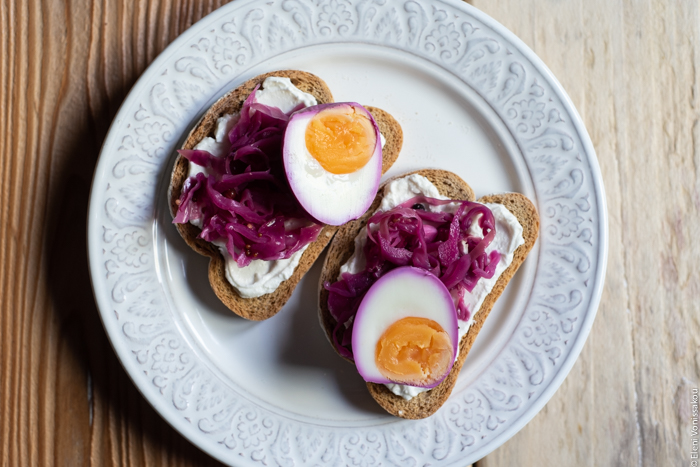

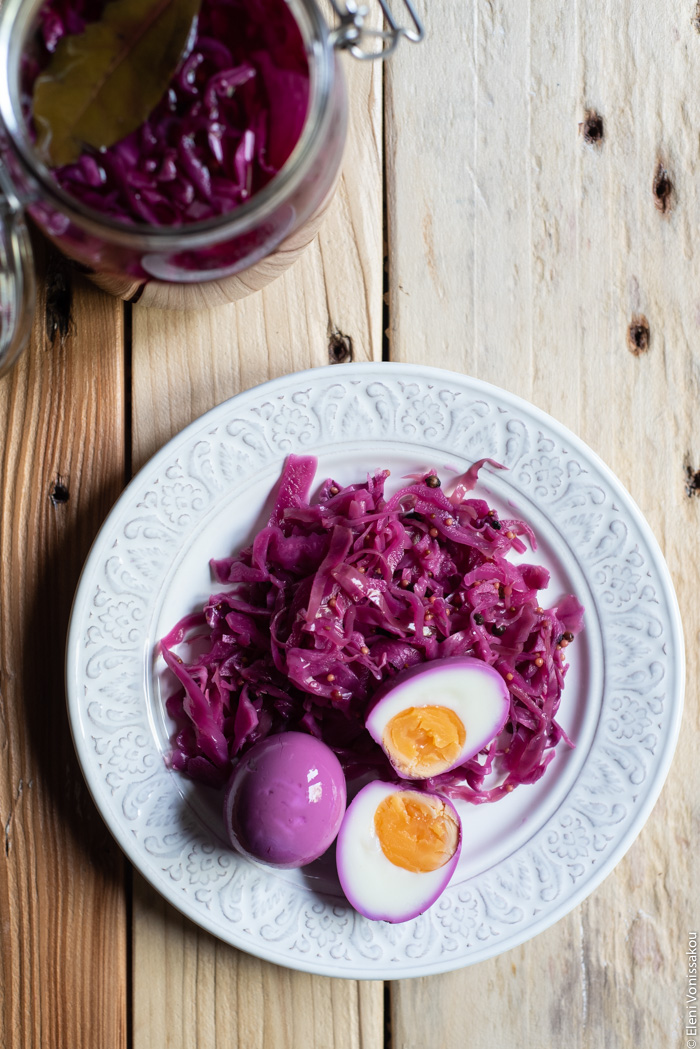


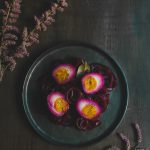
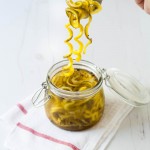

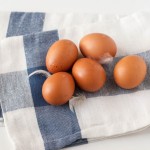

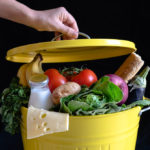

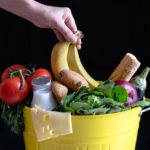

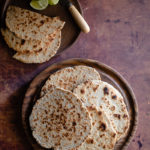

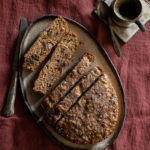
 Hi! My name is Eleni. I’m slightly obsessed with recipes, cooking and food in general. So what else was I to do? I started a food blog.
Hi! My name is Eleni. I’m slightly obsessed with recipes, cooking and food in general. So what else was I to do? I started a food blog.

No comments yet